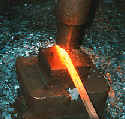| There are secret techniques put into the forging process, and much time and effort is spent before a blade is finished. Now, let’s take a look at how blades are made. |
|
|||||||||||||||||||||||||||||||||||||||||||||||||||
| There are secret techniques put into the forging process, and much time and effort is spent before a blade is finished. Now, let’s take a look at how blades are made. |
|
|||||||||||||||||||||||||||||||||||||||||||||||||||





















